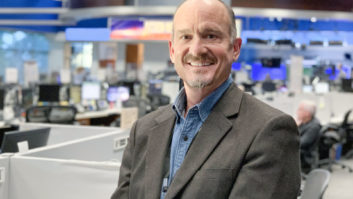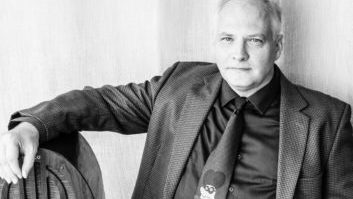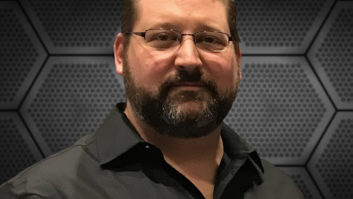TRULY AMATEURISH BEHAVIOR
After seeing some work by amateurs, I would look long and hard before letting some work on my equipment. I say this because at one station, rather than using one wire, they had twisted small, different sizes (12, 14, zip and bell wire) together.
At another station doing the same type of work, when talking to the manufacturer, I was asked “Is it on the air?’ I said, “Yes.” They said, “Don’t touch it.”
At a booster FM, the antenna they’d put up was a 10- or 11-meter ground plane.
Some want to change things, praying they don’t put the station off the air or worse. This is why, without really looking over their shoulder ’til I feel safe with them, I won’t turn amateurs loose on my equipment.
Allan Sotzsky
Hempstead, Texas
PODCAST MUSIC RIGHTS
Ken and Dave, your article (“So You Want to Podcast, Legally? Good Luck!”, Oct. 7 issue) is a little misleading around playing 20–30 second music clips. I believe that “fair use” here does not apply to download duplication. Before you launch your podcast using clips I would speak to your copyright lawyer.
Rob Greenlee
Seattle
David Milberg replies:
Rob, your comment to Ken Deutsch’s Oct. 7 Radio World article is precisely the sort of feedback and dialogue I hoped would result.
As Ken’s story highlights, there are no black letter rules to this gray area of the law. And you are correct, “20- to 30-second snippets” without more detail/explanation as to its application is not necessarily a complete answer to how to claim “fair use” in podcasts that play music. So, let me attempt to do that — specifically as it applies to Rare & Scratchy Rock ’N Roll.
Here is a link to the applicable U.S. copyright law: http://www.copyright.gov/title17/92chap1.html. In sum, as you know, “fair use” is a balancing test of four elements. I have listed them below followed by (in italics) my opinion as to how Rare & Scratchy Rock ’N Roll (“R&SRNR”) measures up with them.
1. The purpose and character of the use, including whether such use is of a commercial nature or is for nonprofit educational purposes; R&SRNR is non-commercial.

2. The nature of the copyrighted work; R&SRNR is a “Rockumentary” intended to enlighten listeners in an entertaining way about the history of various music genres, artists and record labels, etc. In other words, it is not a “music show,” but rather a “show about music.” It plays the minimum amount of music necessary to illustrate the stories and facts presented.
3. The amount and substantiality of the portion used in relation to the copyrighted work as a whole … R&SRNR uses 30 seconds or less of each song. While there this no clear rule on this murky area of the law, I can cite an example that provides some guidance. A very recent federal appellate case determined that a 29-second use of a Prince recording on YouTube was a “fair use.” (Lenz v. Universal Music Corp., Case Nos. 13-16106, 13-16107 [9th Cir. Sept. 14, 2015]) Although that case did not deal with podcasting, and it is not necessarily binding precedent nationwide or even in the case of R&SRNR, it does provide support for my reasoning.
4. [And] the effect of the use upon the potential market for or value of the copyrighted work. I believe that R&SRNR actually enhances the potential market for the copyrighted works. I would be surprised that having a “snippet” would discourage a listener from buying the whole song. In fact, it likely would encourage them to make that purchase. Also, as I note on each of the R&SRNR shows I am creating for an “advance inventory,” before my anticipated 2016 launch, virtually every song I mention and “snippetize” is available in its entirety on YouTube.
So those are my thoughts, Rob (I enjoy reading your blog). I invite your further thoughts and would really like to know what other Radio World readers think, too. Hopefully, this sort of dialogue will lead to greater clarity for all.
AM NIGHTTIME SURVIVAL IDEA
This is more of an idea starter than a formal proposal, but what do you AM broadcasters think of this?
With the hope that some struggling AMs may benefit from real-world usable night power, and to assess the impact among all stations, I was thinking about a real-time, real-world test that could show what would happen if some Class B AMs stayed on the air using, let’s say, 500 watts, into either a non-D tower or their daytime antenna facilities, some Sunday night.
Think about this: In December and January, at 6 a.m. when many pre-sunrise stations sign on with 500 watts into their daytime antenna systems, the ionosphere is still in “full nighttime mode.” Has there ever been an interference complaint about a Class B daytime station running 500 watts pre-sunrise? If so, I don’t remember it. The Class B channels sound even noisier than the “graveyard” channels at 6:05 a.m. in December, but the listeners to those stations don’t seem to even notice it.
Most casual nighttime listeners to AMs tune out by the time the signal is going below the 5 mV/m level. And consider that “micropower” (20 to 100 watt) 5 mV/m signal contours may only go a couple of miles.
So what about trying out what would happen in the real world of AM radio at night in 2015? What if the AM stations that still want to commit to using at least the 500-watt power level, should authorization be granted, sign on during the “experimental period” for “testing” some Sunday night (or series of Sunday nights) as a real-world “experiment” to determine if their local coverage is usable, as well as to assess what interference levels are experienced?
What about asking the NAB or the SBE to work with AM broadcasters to grant a “four Sunday night” special temporary authority (that even may allow interested AMs to sign on at 9 p.m. local time) for a month-long series of Sunday night “experiments” for interested AM broadcasters?
There would have to be some “formalities” to make the test legitimate, such as a “pre-registration” of each station that wants to participate, their frequency, antenna system and power level (up to 500 watts). There are also the problems associated with international agreements, etc. There would be no chance for daytime stations on Class A channels to be part of the test. But this could be a start.
There would need to be an organization (NAB or SBE or …?) that would coordinate how to gather the resulting test information and tabulating the results, but this “test” would be mainly interpreted empirically, rather than plotting formal, math and measurement results. It would be quite unscientific at the start, but it sure would allow us to try out what would happen in the real world of AM radio in 2015.
Do any of you readers think this would be something worthwhile to try?
Ted Alexander, W8IX
Retired CE and retired from The Telos Alliance
Cleveland, Ohio
RADIO ADVERTISING DOES WORK

I take exception with one point in an otherwise excellent article entitled “Why Radio Doesn’t Work.” The article advises to embed a tracer element, i.e. “mention you heard this ad on WJBP and you get a 5 percent discount.” However, that almost never works and only leads to more stories about how “radio doesn’t work.”
Here’s what we tell clients who want to do such a test:
You’ve been given this memo because you’ve asked us to do something our radio stations don’t do — we don’t do ads that say “mention this ad to get a 10 percent discount” or “mention this ad to get a free table lamp when you buy any living room suite valued at $1000 or more on Tuesday after 5.”
In many cases, advertisers want to do this to test the radio station. Yet, it’s not the radio station being put to the test, it’s the offer in your ad. You see, radio works. It’s the most effective form of local advertising there is. However, the vast majority of people are too timid to say “I heard your ad on the radio” simply to get a tiny discount or a table lamp. The situation is even worse when the staff at the store is unaware of the offer and the customer feels embarrassed when they have to explain what they heard on the radio.
You shouldn’t make your customers jump through hoops to get a deal. If you’re going to give away the table lamp, do so whether they mention the ad or not.
Remember, people respond to the need, not to the ad. An ad offering a 50 percent discount on a product nobody needs or wants is still not going to produce results. Sure, there are other stations that will run your ad as-is. However, they’re more interested in taking your money than in helping you develop an effective marketing strategy. We’re not like that.
If you genuinely want to test our radio station, consider giving away $100 bills to every customer who comes in and says they heard your ad. No purchase necessary, no questions asked. Free $100 bills. We’ll even run the ads for free. How many $100 bills do you think you’d give away?
Good radio ads consist of a decent offer, a call to action and several other important factors. Yet few people know how to write good radio ads. Our staff has been trained how to do it the right way. Before you invest your hard-earned money on radio advertising, it’s important to have a good ad. Call us! We can help do it right.
Larry Fuss
South Seas Broadcasting Inc.
Pago Pago, American Samoa
IBIQUITY ACQUISITION
Surely there must be rejoicing among the angels of the highest heaven now that those who loaned cash to iBiquity are out from under that albatross (“DTS Steps Into Radio’s Tech Spotlight,” Sept. 23). However, DTS expresses optimism about the future of terrestrial AM and FM broadcasting. May I suggest a new motto for DTS? “Onward, to the 1960s!”
Roy Humphrey
Pittsburgh, Pa.
GRAMMAR
In deference to Rick Miller (“Grammar Foul,” Nov. 4 issue), I never took Latin, and my liberal arts degree is in psychology, not English, but I must come to the defense of Alan Jurison. As a child of the sixties I am acutely aware of sexism, in language and elsewhere. Throughout college I always used the awkward his/her and the more clever s/he in my writing.
Later I came across a book titled “The handbook of non-sexist writing” (I am pretty sure it was the 1981 Women’s Press book by C. Miller and K. Smith, but I am not sure). One of the more interesting points in the book regarded the facts that a) English needs a non-gendered singular pronoun; and b) that language is ultimately a living thing that grows and changes, albeit slowly (the ultimate democracy one might say). It therefore concluded that the use of “their” in the singular was therefore logical in the long run, given no one had invented anything better.
I still use s/he (and continued to do so in college even when some profs corrected me) and sometimes use “his/her,” but I also added “their,” as a singular, to my lexicon.
My minor was in communication sciences, and the bit about language evolving made a lot of sense to me (just look up the “great vowel shift” for a fascinating historical example). I do realize however, that at any given point in time the rules are, well, the rules, so I forgive English teachers (and Mr. Miller) who enforce them.
Rolf Taylor
Rocket Engineering and Consulting,
Annandale, Va.












